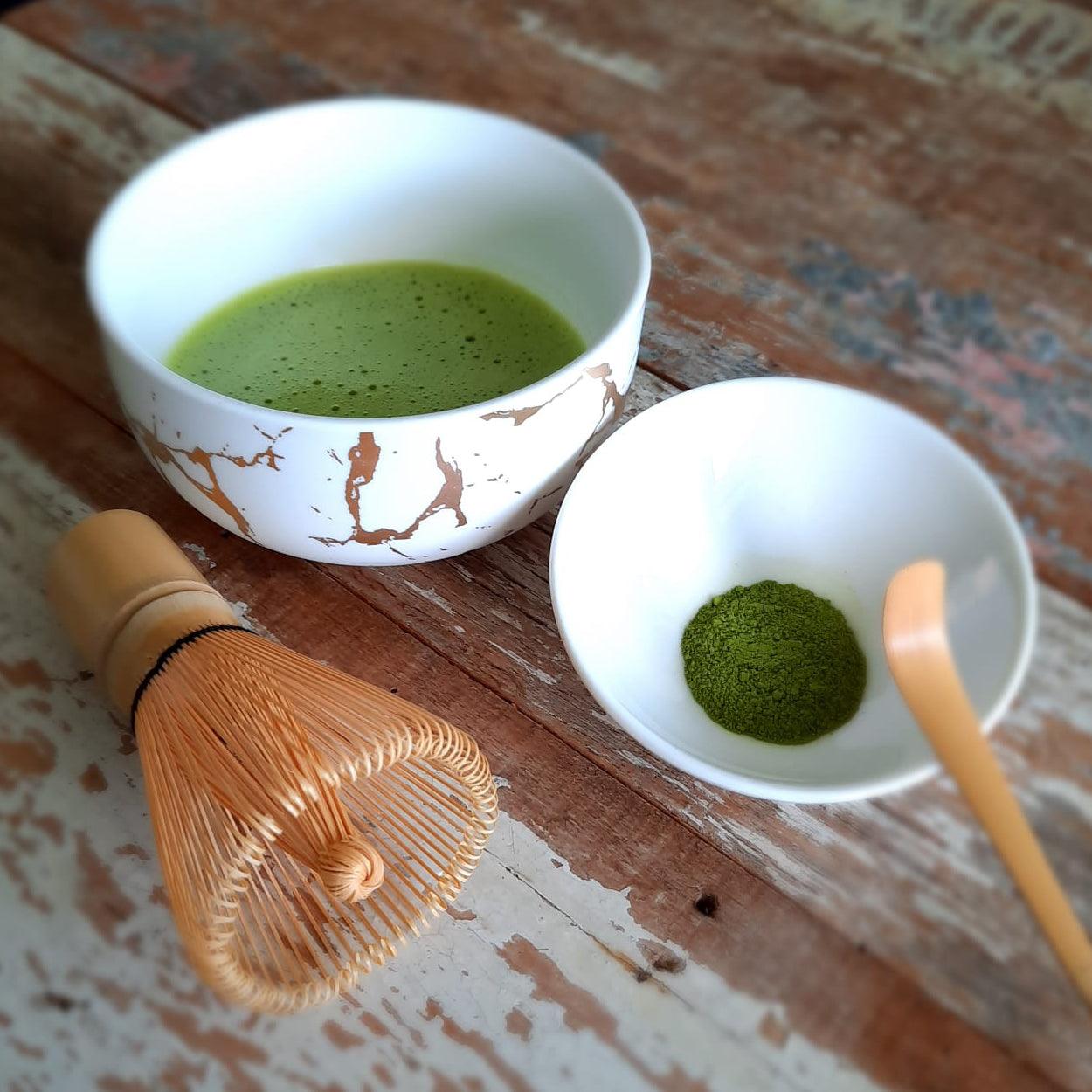
Unveiling the History of Matcha: From Ancient Origins to Modern Delights
As the vibrant green powdered tea gains popularity around the globe, it's essential to explore the captivating history that has shaped matcha into the cherished beverage it is today. With its roots deeply embedded in Japanese culture, matcha has a rich and intriguing past that spans centuries. Join us on a journey through time as we uncover the fascinating story behind this beloved drink.
Ancient Origins:
The story of matcha begins in ancient China during the Tang Dynasty (7th-10th century). Chinese Zen Buddhist monks discovered the profound benefits of consuming powdered tea, as it helped them stay alert during long periods of meditation. It was during this time that the practice of pulverizing tea leaves into fine powder, known as "luo cha" or "ground tea," was born.
Arrival in Japan:
The introduction of matcha to Japan can be credited to the influential monk, Eisai. In the 12th century, Eisai, who had studied Buddhism in China, brought back tea seeds and the methods of tea cultivation to Japan. He propagated the cultivation of tea plants and the preparation of powdered tea, eventually leading to the establishment of the Japanese tea ceremony.
The Rise of the Japanese Tea Ceremony:
During the Kamakura period (1185-1333), the tea ceremony, or "chanoyu," emerged as an integral part of Japanese culture. The practice of preparing and serving matcha became a symbol of hospitality, tranquility, and respect. Zen Buddhist monks embraced matcha as a means to achieve a state of mindfulness and focus, which harmonized perfectly with the principles of Zen Buddhism.
The Samurais and Matcha:
The medieval era in Japan witnessed the rise of the samurai class, who played a significant role in the popularization of matcha. The samurais valued matcha for its ability to provide energy, mental clarity, and enhance their meditative practices. Matcha tea rituals became an essential part of samurai training, fostering a sense of discipline, balance, and composure.
Evolution and Modernization:
In the 16th century, tea master Sen no Rikyu revolutionized the tea ceremony, simplifying it and emphasizing the principles of wabi-sabi, a concept centered around finding beauty in imperfection and simplicity. Rikyu's influence further propelled matcha into the mainstream, as it gained favor among the ruling classes and eventually spread throughout society.
Contemporary Matcha Culture:
In recent decades, matcha has experienced a resurgence in popularity worldwide, transcending traditional tea ceremonies. Its vibrant green color, earthy flavor, and numerous health benefits have captured the attention of a global audience. Matcha has found its way into a wide range of culinary creations, including lattes, smoothies, ice creams, and desserts, becoming a versatile ingredient that adds a distinctive touch to modern recipes.
Health Benefits and Beyond:
Beyond its cultural significance, matcha has gained recognition for its potential health benefits. It is packed with antioxidants, vitamins, and minerals, and is believed to enhance focus, boost metabolism, and promote a sense of calm and well-being. Matcha enthusiasts appreciate not only its unique flavor but also the potential it holds for supporting a healthy lifestyle.
Matcha's remarkable journey from ancient China to its current global popularity showcases its enduring appeal and cultural significance. From its humble origins as a tea for monks, matcha has evolved into a versatile and cherished beverage that bridges tradition and modernity. Its vibrant green hue and exquisite taste continue to captivate tea enthusiasts around the world, making matcha an enduring symbol of Japanese culture and a beloved part of our global tea heritage.


